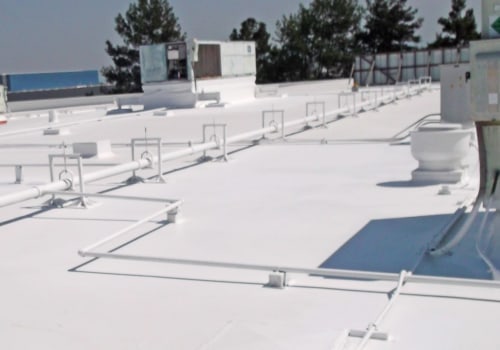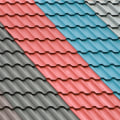Roof repairs are a critical part of maintaining the integrity of your building. Flashing and gutters are two important components of a roof system that need to be properly repaired in order to keep your building structurally sound. In this article, we'll provide an overview of flashing and gutter repair, including the different types of repairs needed, the materials and tools used, and the best practices for successful repairs. Flashing is a thin sheet of metal, usually aluminum or copper, that is used to seal the roof joints and prevent water from entering the home. Gutters are the channels that direct water away from the roof and into the drainage system.
Both flashing and gutters can become damaged over time due to weather conditions or improper installation and maintenance. When repairing flashing and gutters, it's important to use the right materials and tools for the job, as well as follow best practices to ensure a successful repair.
Materials for Flashing and Gutter Repairs
Flashing and gutter repairs come in a variety of materials, each with its own advantages and disadvantages. Copper is one of the most durable materials used in roof repairs and is also resistant to corrosion. It is often more expensive than other materials, however.Aluminum is a lightweight material that is also corrosion-resistant, but it is not as strong as copper. Steel is strong, but also prone to rusting. Vinyl is an inexpensive and lightweight material that is not as durable as metal, but it can be used in many different types of repairs. The cost of each material should be taken into consideration when choosing the best option for a particular repair. Copper and aluminum are typically more expensive than steel or vinyl, but they can provide added durability and protection from corrosion.
Steel is more economical than copper or aluminum, but its rust-resistance may not be sufficient for certain types of repairs. Vinyl can be an economical choice, but it does not provide the same level of protection as metal materials. When considering the best material for flashing and gutter repairs, it's important to consider the type of repair being done and the climate where the repair will be performed. In areas with high levels of humidity, copper or aluminum may be the better choice due to their corrosion-resistance. In areas with low humidity, steel may be the more cost-effective option.
Vinyl may be the best choice for simple repairs that don't need to stand up to harsh weather conditions.
Maintaining Flashing and Gutters
Flashing and gutters are an essential part of any commercial roof repair project and require regular maintenance to ensure they last as long as possible. Inspecting, cleaning, and repairing them is essential for preventing costly repairs down the road. It's important to inspect flashing and gutters regularly to spot any potential problems before they become major issues. A visual inspection should be done every few months and should include a close look at all the components of the system.Look for cracks, gaps, rust spots, and other signs of damage. Cleaning your flashing and gutters should also be done on a regular basis. Debris and dirt can easily accumulate in gutters and flashing, causing blockages and water damage. Use a hose or pressure washer to remove dirt and debris from the system.
Repairing flashing and gutters should also be done as soon as possible if any problems are identified. Make sure to use the correct materials for the job, such as rust-proof screws or sealants. Routine maintenance is key to keeping flashing and gutters in good condition. It's important to ensure that they are regularly inspected, cleaned, and repaired, so that costly repairs can be avoided in the future.
Installation Tips for Flashing and Gutter Repairs
Flashing and gutters are essential components of any commercial roof repair project, and proper installation is key to avoiding costly repairs down the road due to water damage. To ensure that your flashing and gutters are properly installed, there are certain steps you should take.Quality Materials:
It is important to use quality materials when installing flashing and gutters. Using materials of lower quality can lead to structural problems down the road, as they may not be able to withstand the elements as well as higher-grade materials.Be sure to use materials that have been approved by the building code in your area, and don’t forget to check for corrosion or other signs of wear and tear before installation.
Right Tools:
Using the right tools for the job is also crucial for successful flashing and gutter installation. Make sure you have all the necessary tools on hand before you start, such as a level, screwdriver, utility knife, caulk gun, and sealant.Best Practices:
When installing flashing and gutters, it is important to follow best practices. This includes making sure that all seams are tightly sealed, that all connections are properly secured, and that all joints are flush. Additionally, it is important to use fasteners that are appropriate for the material being used.Finally, check for any gaps or leaks after the installation is complete.










